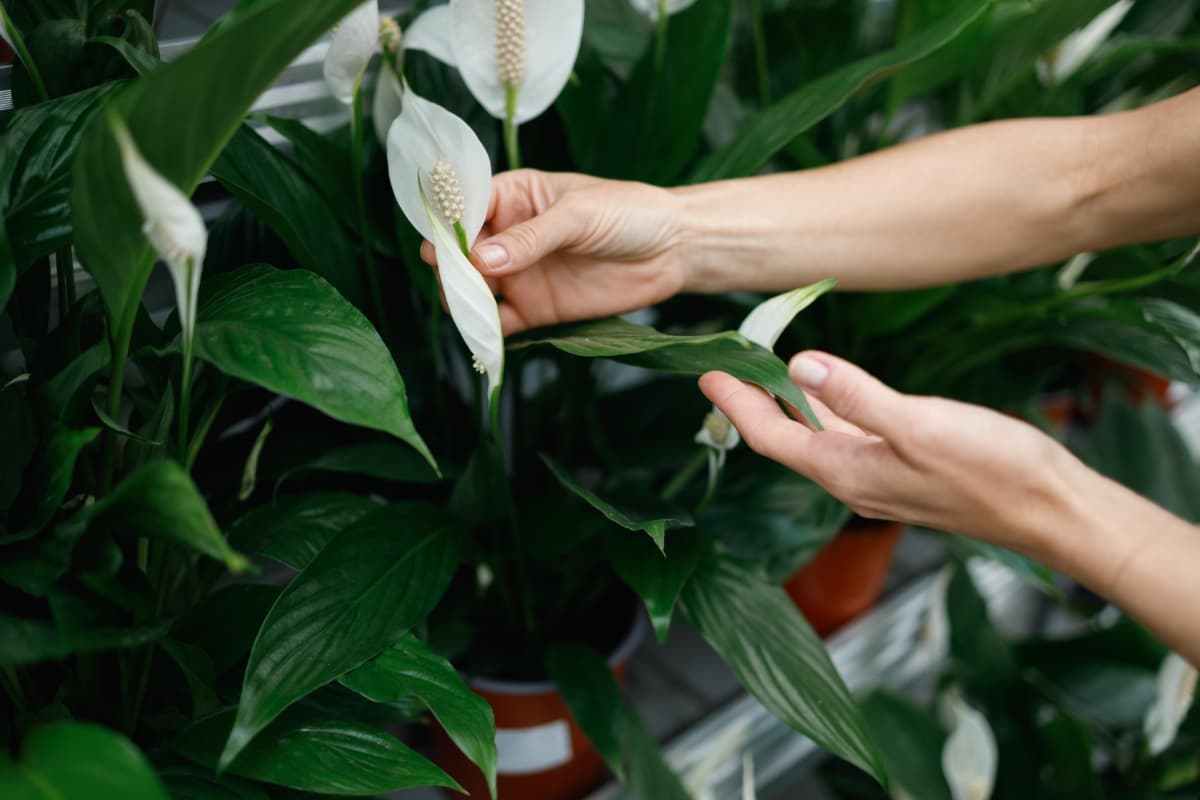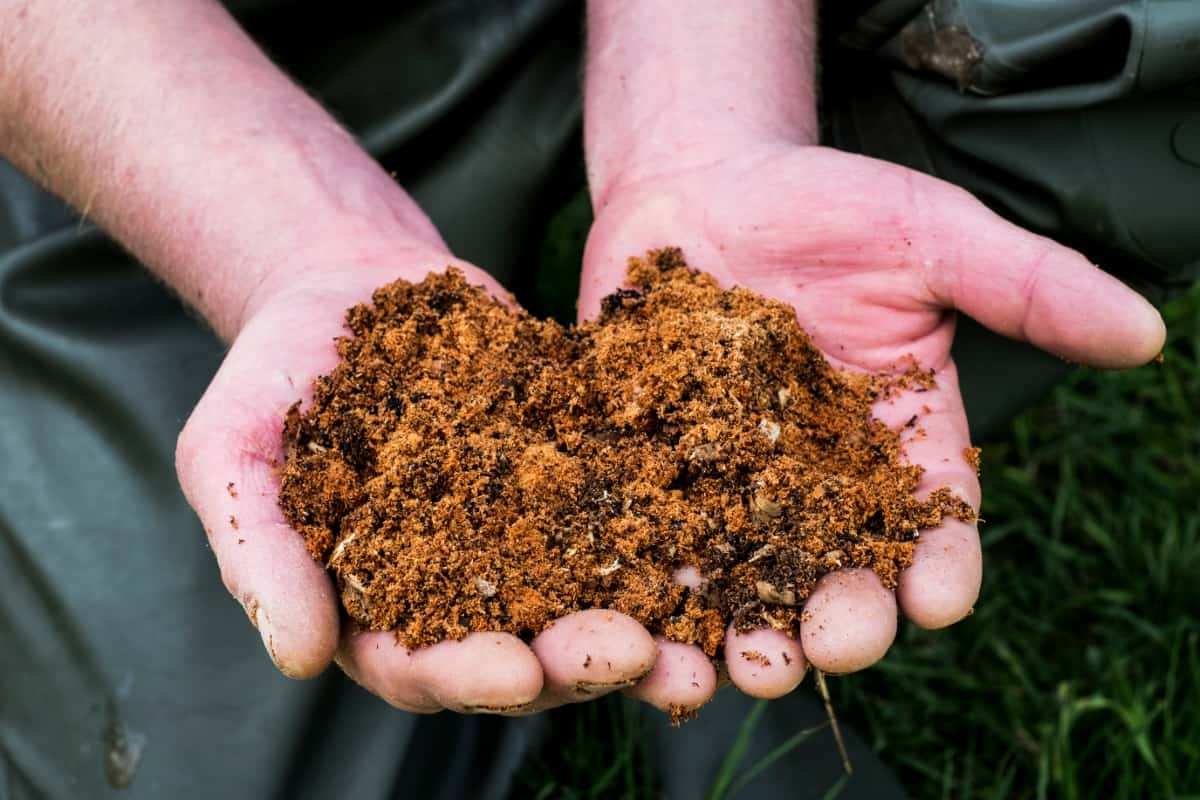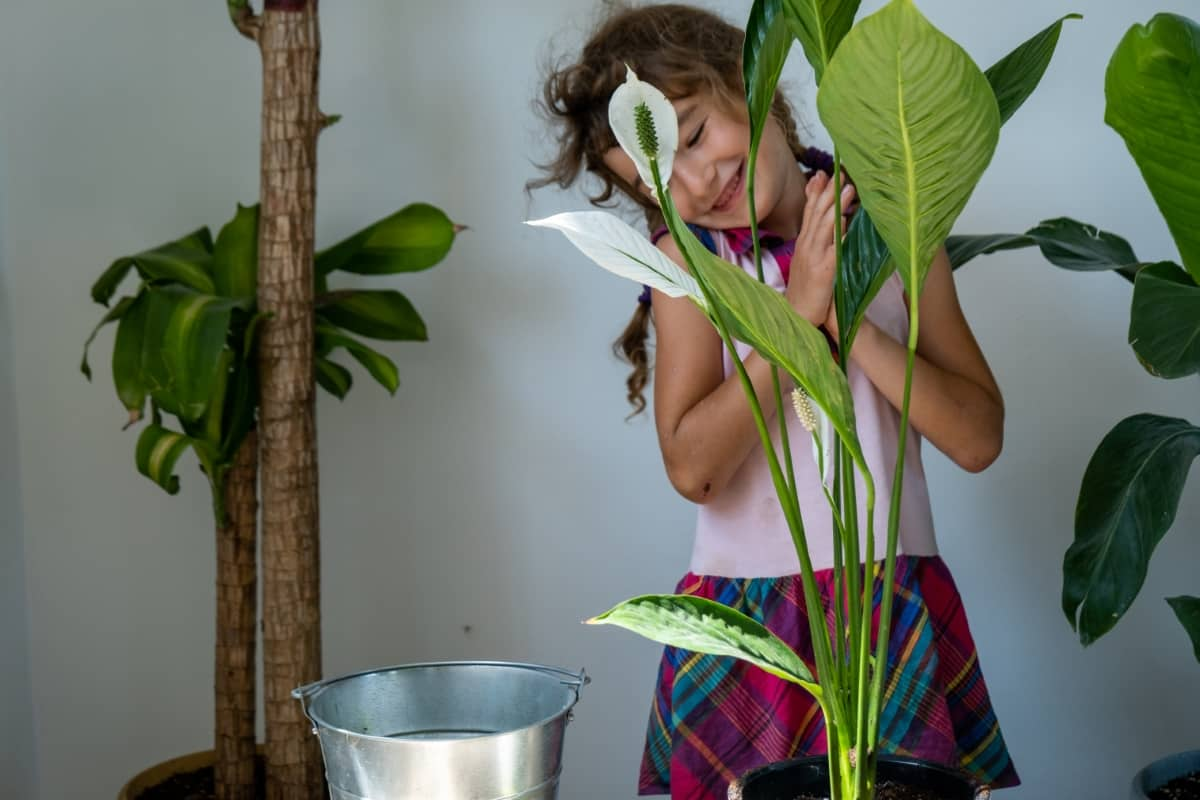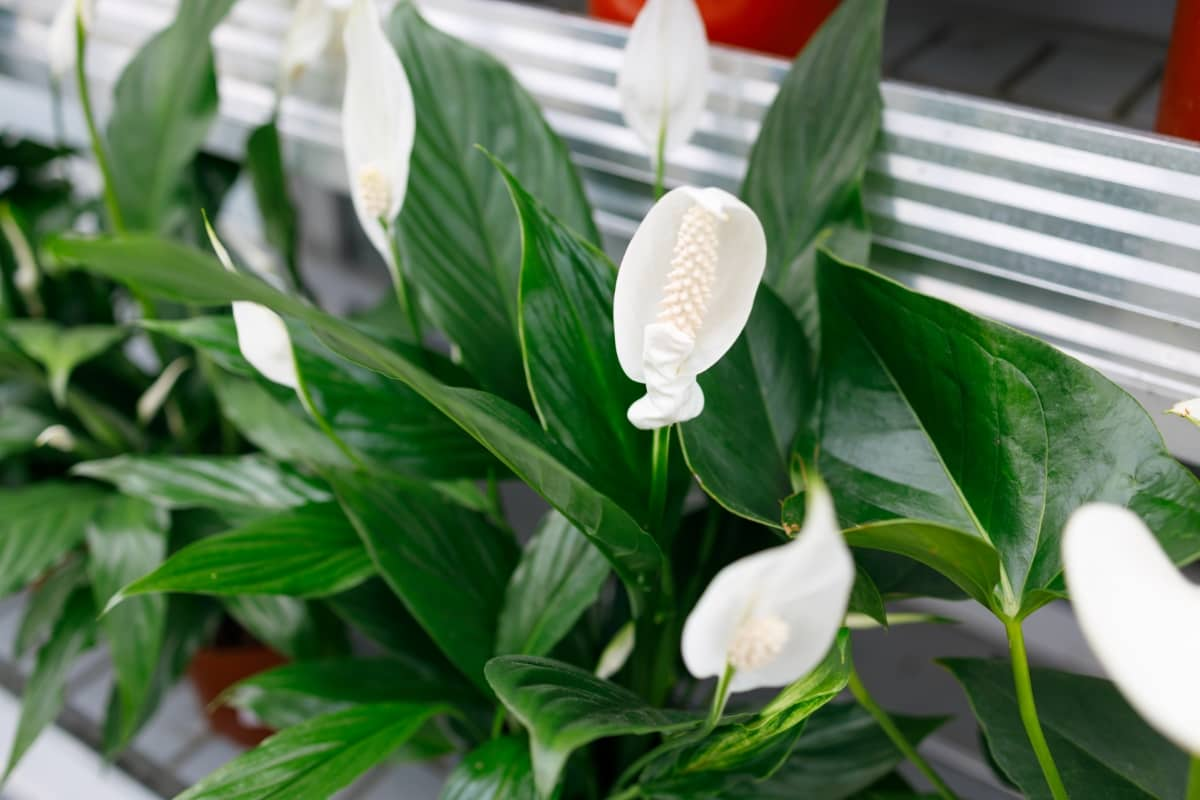Peace lilies (Spathiphyllum spp.) are popular indoor plants known for their elegant white blooms and air-purifying qualities. To keep them thriving, it’s crucial to provide the right nutrients, and fertilization is an essential aspect of their care. There are various types of fertilizers suitable for peace lilies, including organic, liquid, and those with specific NPK ratios. Additionally, some gardeners prefer DIY homemade recipes to nurture their plants. Let’s explore each type.

Best Fertilizer for Peace Lily Plants
Understanding Peace Lily Fertilization Needs
To properly nourish Peace Lily plants, it’s crucial to select a fertilizer with high nitrogen compared to phosphorus and potassium. This is because Peace Lilies are prolific leaf producers. However, excessive nitrogen can inhibit flower blooming. Choose a fertilizer with a lower nitrogen concentration to avoid the risk of root burn. Aim for a product with a balanced ratio, such as 20-10-10 (nitrogen-phosphorus-potassium), as it provides sufficient nutrients without compromising the health of the Peace Lily.
Organic Fertilizers for Peace Lily Plants
Compost is an excellent choice, combining decayed organic matter to enhance soil and nutrient content. Well-rotted manure, such as a cow or chicken manure, offers a rich source of nitrogen, phosphorus, and potassium. Fish emulsion, derived from fish waste, provides a balanced mix of nutrients and promotes healthy foliage.
Also, worm castings are the best organic fertilizer for indoor peace lily plants to boost soil fertility, microbial activity, and water retention. Seaweed extract contains micronutrients, growth hormones, and beneficial enzymes. Bone meal, high in phosphorus, aids in flower and root development. Mixing these organic fertilizers in appropriate proportions and applying them during the growing season will nourish your peace lily, promoting vibrant blooms and lush green foliage.
Synthetic Fertilizers Suitable for Peace Lily Plants
For Peace Lily plants, opt for a synthetic fertilizer with a formula like 20-10-10, indicating proportions of nitrogen, phosphorus, and potassium. This promotes overall growth, robust foliage, and vibrant blooms. Ensure the fertilizer also contains essential micronutrients like iron and magnesium.
In case you missed it: Propagating Peace Lily from Cutting: A Step-By-Step Guide

When to Fertilize Peace Lilies? Dilute the fertilizer to half or quarter strength to prevent overfeeding, and apply it every 4-6 weeks during the growing season (spring and early summer). Always water the plant prior to fertilizing to prevent root burn. Adjust the frequency with respect to the plant’s response, aiming for healthy, dark green leaves and regular flowering without excessive leaf growth.
Slow-Release Fertilizers for Peace Lily Plants
Fertilizer spikes with NPK 20-20-20 or 20-10-10 are the best slow-release fertilizer for peace lily care and offer a convenient and effective nutrient supply. These spikes, typically containing a balanced blend of nitrogen, phosphorus, and potassium, work as the best fertilizer for Peace Lily in pots, gradually releasing nutrients into the soil and promoting sustained growth and vibrant blooms.
The controlled release minimizes the risk of over-fertilization, preventing potential harm to the sensitive Peace Lily. Fertilizer spikes are easy to use, requiring insertion into the soil at specified intervals. This method ensures a steady nutrient uptake for the plant, enhancing overall health and resilience.
Liquid Fertilizers and Peace Lily Plant Health
Liquid fertilizers suitable for Peace Lily plants include balanced formulas with N-P-K ratios, such as 20-20-20 or 20-10-10. Specialized liquid formulations for indoor plants with added micronutrients are also beneficial. Brands such as Miracle Grow Fertilizer for Peace Lily, Schultz, and Dyna-Gro are top liquid fertilizers for peace lily flowering and growth. Scotts Osmocote Pour+Feed is a high-quality bloom booster fertilizer for peace lilies.
Consider seaweed extract and fish emulsion as an organic, safe, and effective fertilizer for peace lily in low light. These fertilizers support healthy leaf growth and vibrant blooms. It’s crucial not to over-fertilize, as Peace Lilies prefer slightly moist soil. Regularly check soil moisture and adjust watering and fertilizing accordingly. Peace Lilies thrive with regular fertilization during the growing season (spring and summer) but should be sparingly fed in fall and winter.
Optimal NPK Ratio For Peace Lily Plant Health
For Peace Lilies, a balanced NPK (Nitrogen, Phosphorus, Potassium) ratio in fertilizers is essential for optimal growth. Aim for a balanced formula, such as 20-20-20, providing equal proportions of these nutrients. Nitrogen supports lush foliage, phosphorus aids in root development and flowering, while potassium enhances overall plant health. Too much nitrogen content will result in excessive leaf growth instead of blooms. Apply fertilizer every 4-6 weeks during its active growth season, diluting it to half the recommended strength.
In case you missed it: 10 Common Problems With Peace Lily Plants: Treatment and Solutions

Fertilizing Peace Lilies: Dos and Don’ts
Do’s
- Frequency: Fertilize every 6-8 weeks during the growing season (spring and summer).
- Dilution: Use a balanced, water-soluble fertilizer diluted to half the recommended strength.
- Moist Soil: Apply fertilizer to moist soil to prevent root burn.
- Regular Feeding: Provide a consistent feeding schedule for optimal growth.
- Flush with Water: Occasionally flush the soil with water to remove excess salts.
Don’ts
- Over-fertilization: Avoid excessive fertilizing, which can harm the sensitive Peace Lily.
- Dry Soil Application: Don’t fertilize dry soil; always moisten it first.
- Winter Feeding: Refrain from fertilizing in winter when the plant is in a dormant phase.
Best Time to Fertilize Peace Lily Plants: When to Fertilize Peace Lilies
- Fertilize peace lilies during their active growth period, generally from spring through early summer.
- Apply fertilizer every 4-6 weeks or follow package instructions for specific formulations.
- Dilute the fertilizer to half or quarter strength to avoid over-fertilization, which can burn the plant roots.
- Always water the plant prior to fertilizing to prevent root burn.
- Reduce or avoid fertilizing during the dormant winter months when growth slows.
- Monitor the plant for symptoms of nutrient deficiencies or excess, adjusting the fertilization schedule accordingly.
DIY Fertilizer Recipes for Peace Lilies
Banana Peel Fertilizer for Peace Lily
One highly effective homemade fertilizer for Peace Lily is the Banana Peel Fertilizer. Rich in potassium, phosphorus, and calcium, banana peels promote robust root development and enhance overall plant health. Create a nutrient-rich blend by chopping banana peels and soaking them in water for a few days. Strain the solution, dilute it, and use it to feed your plant.
Coffee Grounds Fertilizer for Peace Lily
Another organic and Eco-friendly natural fertilizer suitable for peace lilies is the Coffee Grounds Fertilizer, which not only enriches the soil with nitrogen but also acts as a natural pest repellent. For optimal results, mix finely crushed used coffee grounds into the soil, providing your Peace Lily with essential nutrients. These organic alternatives not only contribute to sustainable gardening practices but also eliminate the risk of chemical residue.
In case you missed it: The Best Fertilizer for Lillies: When and How to Apply

Conclusion
Ultimately, the best fertilizer for peace lily plants is one that aligns with your gardening philosophy, meets the specific nutritional needs of the plant, and fits seamlessly into your routine. Regular monitoring of your peace lily’s health and adjusting the fertilization regimen accordingly will contribute to a thriving and lush indoor or outdoor garden.
- Feed Your Flock for Less: Top 10 Tips to Save on Chicken Feed
- Ultimate Guide to Ossabaw Island Hog: Breeding, Raising, Diet, and Care
- Hatching Answers: The Top 10 Reasons Your Chickens Aren’t Laying Eggs
- Eggs and Economics: Breaking Down the Cost of Raising Backyard Chickens
- Defend Your Greens: Proven Methods to Keep Iguanas Out of Your Garden
- Ultimate Guide to Cinnamon Queen Chicken: A Comprehensive Guide for Beginners
- Ultimate Guide to California Tan Chicken: Breeding, Raising, Diet, Egg-Production and Care
- Ultimate Guide to Marsh Daisy Chicken: Breeding, Raising, Diet, and Care
- 10 Types of Chicken Farming Businesses You Can Start for Profits